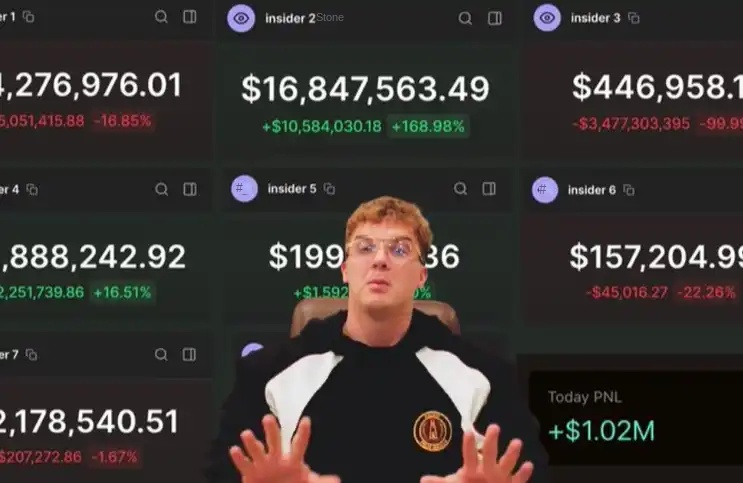More than 3.6 billion US dollars of Ethereum are pledged again, the matryoshka is here
Are the general public eyeing Ethereum in their pockets? Roughly speaking, nearly 20 Ethereum derivatives (XXXETH/ETHXXX) have been generated by the top staking protocols. This article outlines 6 mainstream staking protocols and their treasuries. Without deduplication, there are at least $3.526 billion worth of Ethereum derivative assets constantly growing, accounting for 5.2% of the total staked amount on the Beacon Chain. The "nesting" is currently underway.
EigenLayer
EigenLayer is an Ethereum-based re-staking protocol that provides Ethereum-level security for the entire Ethereum crypto-economic system in the future. It allows users to re-stake native ETH, LSDETH, and LP Tokens through the EigenLayer smart contract and receive validation rewards, enabling third-party projects to enjoy the security of the ETH mainnet while also earning more rewards and achieving mutual benefits.
On August 1, 2022, EigenLayer developer EigenLabs completed a $14.5 million seed round of financing, with Polychain Capital and Ethereal Ventures co-leading the investment.
On March 29, 2023, EigenLabs, the developer of EigenLayer, completed a Series A funding round of $50 million, led by Blockchain Capital, with participation from Electric Capital, Polychain Capital, Hack VC, Finality Capital Partner, Coinbase Ventures, and IOSG Venture.
TVL: $20.45 billion
According to Defillama data, the current total TVL of EigenLayer is 2.045 billion US dollars, with the top three holdings in the treasury being ETH and its derivatives: WETH (45.23%), STETH (22.22%), and SWETH (13.34%).

ether.fi
ether.fi is a non-custodial liquidity staking platform that launched its liquidity staking token eETH on the mainnet on November 12, 2023. Users who stake ETH on ether.fi will receive the protocol LST (eETH), which can be used to generate more yield across the entire DeFi ecosystem, including re-staking on EigenLayer. Throughout the process, users will retain control of their private keys while delegating Ethereum validator operations to node operators. Each validator generated through its protocol will be represented as an NFT. Ethereum stakers who deposit at least 32 ETH will hold an NFT representing the validator's economic interest.
ether.fi has released its roadmap for the first half of 2024. The team has scheduled the TGE for April, with other key dates including the release of the DAO framework in February and the token economics document in March. Additionally, mainnet v3 is planned for release in early Q2.
On February 28, 2023, ether.fi completed a $5.3 million financing round, led by North Island Ventures, Chapter One, and Node Capital, with participation from BitMex founder Arthur Hayes and others.
TVL: $5.09 billion USD
According to Defillama data, the current TVL of ether.fi has reached 509 million US dollars, with a monthly growth rate of 367%. Currently, only WETH is held in the treasury.

Swell Network
Swell Network is an Ethereum liquidity re-staking protocol. Users can collect Pearls by staking swETH and providing liquidity, and then exchange them for SWELL during the token generation event later this year, with a distribution of 50 million SWELL (5%). Swell Network launched the re-staking token rswETH (Restaked Swell Ether) on January 30th, allowing users to earn Pearls, EigenLayer points, and future re-staking rewards, providing unrestricted access to EigenLayer Restaking for users to use in DeFi, while continuing to accumulate Restaking rewards.
On March 14, 2022, Swell Network completed a $3.75 million seed round of financing, led by Framework Ventures, with participation from IOSG Ventures, Apollo Capital, Maven 11, and angel investors Mark Cuban, Kain Warwick, Jordan Momtazi, Fernando Martinelli, Ryan Sean Adams, David Hoffman, Loong Wang, and Suji Yan, the founder of Mask Network.
TVL: $4.51 billion
According to Defillama data, the current Swell Network TVL is 451 million US dollars, with swETH at 463 million US dollars and rswETH at 3.41 million US dollars.

Kelp DAO
Kelp DAO is a Restaking project under Stader Lab, a multi-chain LSD platform. It is based on EigenLayer and built with rsETH to create the LRT (Liquid Restaked Token) solution.
Kelp Dao allows users who pledge their assets to earn Kelp points. The Ethereum in the project treasury is also pledged to EigenLayer and shared with the community users. As of December 19, 2023, Kelp DAO has attracted approximately 38,000 ETH deposits within just 6 days of its launch.
On October 7, 2021, Stader Labs announced the completion of a $4 million seed round of financing, led by Pantera Capital, with participation from Coinbase Ventures, True Ventures, Jump Capital, Proof Group, Hypersphere, and others.
On January 20, 2022, Stader Labs announced the completion of a $12.5 million private placement financing at a valuation of $450 million. The round was led by Three Arrows Capital, with follow-on investments from Blockchain com, Accomplice, DACM, GoldenTree Asset Management, Accel, Amber, 4RC, Figment, and several angel investors.
TVL: $255 million
According to Defillama data, the current total TVL of Kelp DAO is 255 million US dollars, with three types of Ethereum derivatives in the treasury: 68,360 ETHX (63.02%), 35,230 STETH (31.78%), and 0.538 SFRXETH (5.2%).

Renzo
Renzo is a liquidity re-staking protocol that is currently running on EigenLayer's mainnet. The core of Renzo is ezETH, which is a liquid restaking token (LRT). Users can mint this token by depositing Ethereum or LST into Renzo. ezETH can be further used in other DeFi protocols to gain compound returns. Renzo abstracts all the complexity for end-users, allowing them to participate in Eigenlayer's re-staking ecosystem with low barriers to entry. As a native re-staking product, Renzo's advantage lies in its ability to fully stake, without being constrained by EigenLayer LST deposit limits.
On January 15th, Renzo, a liquidity re-staking protocol in the Eigenlayer ecosystem, announced the completion of a $3 million seed round of financing. The round was led by Maven11, with participation from SevenX Ventures, Figment Capital, IOSG, and others.
TVL: $155 million
According to Defillama data, the current Renzo TVL has reached 155 million US dollars, with a monthly growth rate of 1368%.

Eigenpie
EigenLayer is an Ethereum-based re-staking protocol that allows users to re-stake native ETH, LSDETH, and LP Tokens and receive validation rewards through the EigenLayer smart contract. It is jointly launched by the decentralized liquidity aggregation protocol Magpie and EigenLayer. Eigenpie is a service provided to users based on EigenLayer smart contract technology, allowing users to receive passive income from both Ethereum staking and EigenLayer without a lock-up period.
Isolated Liquid Restaking (ILR) tokens are re-staking certificates generated by Eigenpie. They can only be minted by depositing specific LST tokens, rather than a basket of different LST tokens. Users can deposit their LST tokens into Eigenpie to obtain the LRT version of their specific asset. The ILR tokens received by users when depositing LST into Eigenpie will retain their original name and have the prefix "m" added to them.
Eigenpie's native token is EGP, with a total supply of 10 million. The distribution includes IDO (40%), community incentives (35%), Magpie Treasury (15%), and early supporters airdrop (10%). EGP tokens will be introduced through a fair launch with no VC or pre-sale participation. The team has officially relinquished token distribution and allocated 15% of EGP tokens to Magpie Treasury.
On September 8th, 2022, Magpie Protocol announced the completion of a $3 million seed round of financing. The round was participated by Jump Crypto, ArkStream Capital, Sandeep Nailwal, GSR Markets, Parafi Capital, Republic Capital, Big Brain Holdings, Serafund, Faculty Group, MH Ventures, D1 Ventures, Apollo Capital, and others.

Welcome to join the official BlockBeats community:
Telegram Subscription Group: https://t.me/theblockbeats
Telegram Discussion Group: https://t.me/BlockBeats_App
Official Twitter Account: https://twitter.com/BlockBeatsAsia
 Forum
Forum OPRR
OPRR Finance
Finance
 Specials
Specials
 On-chain Eco
On-chain Eco
 Entry
Entry
 Podcasts
Podcasts
 Data
Data



 Summarized by AI
Summarized by AI






